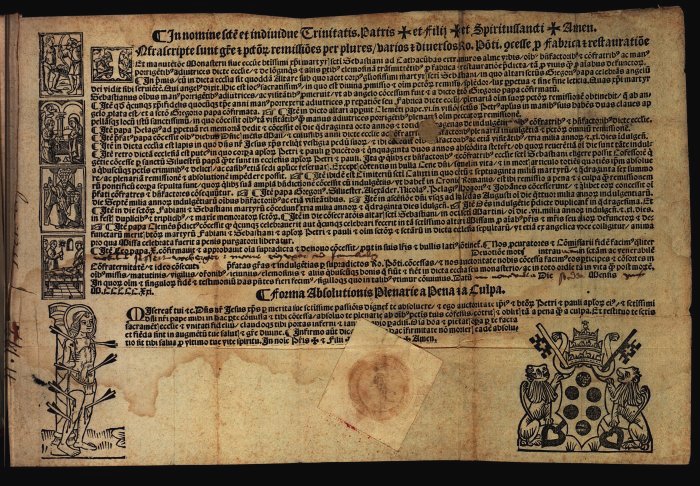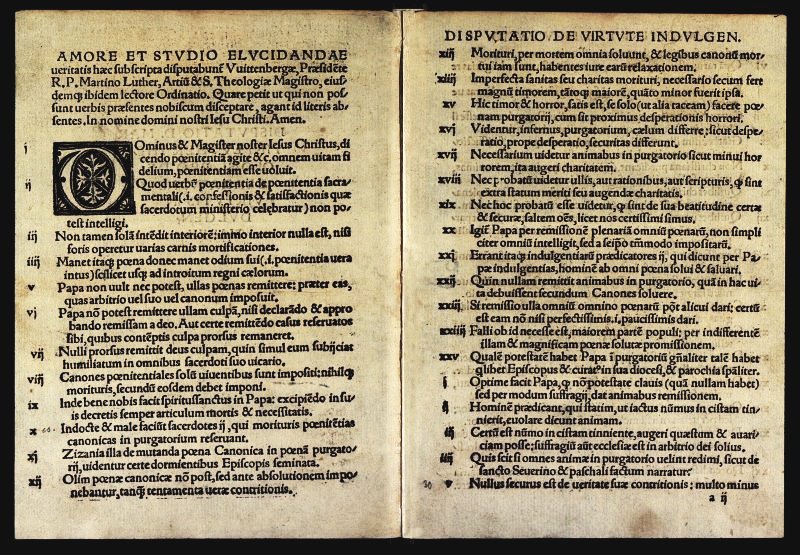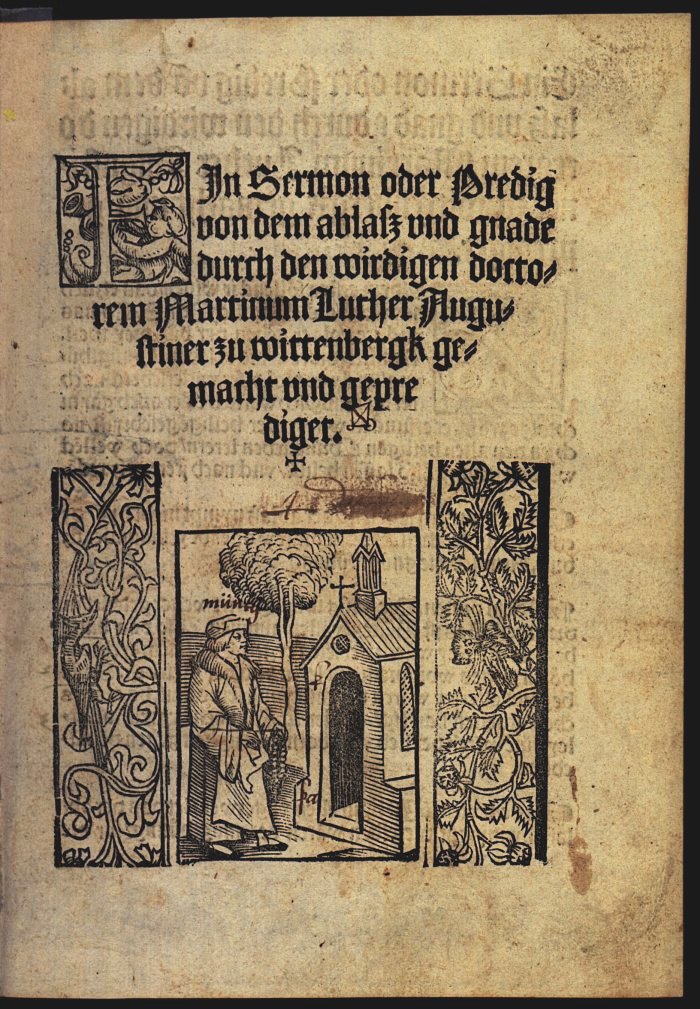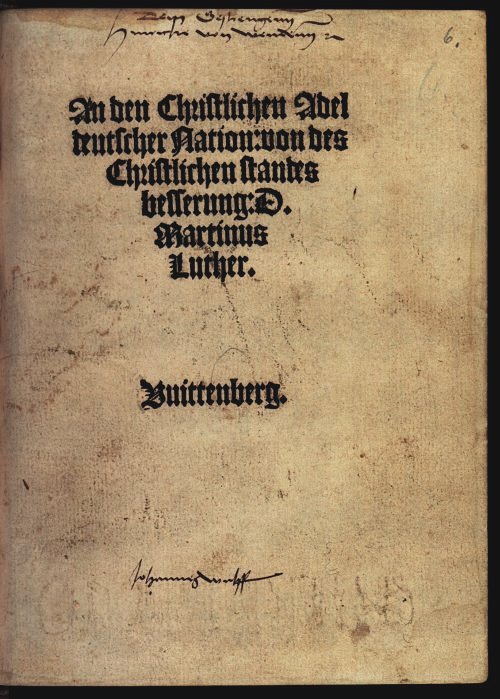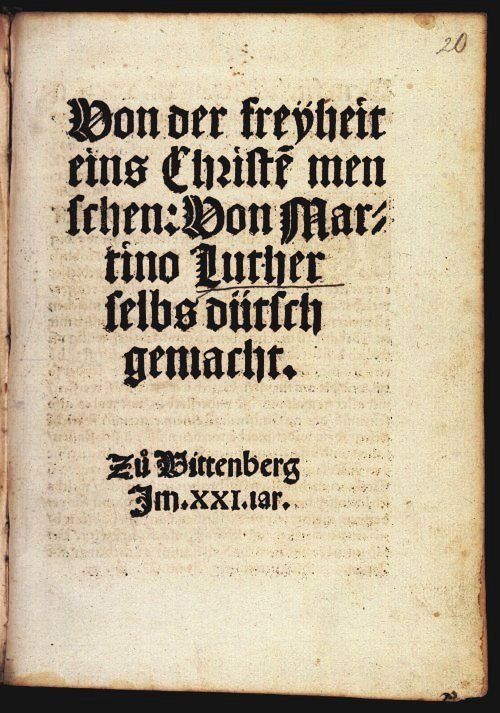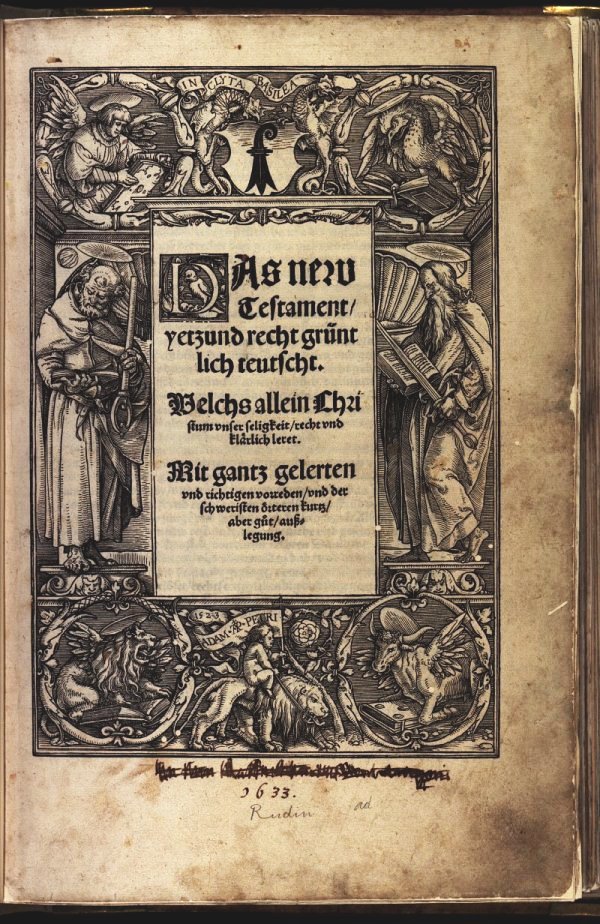Indulgences and Luther's first Reformation prints
The criticism on indulgences was the main trigger for the Reformation. Letters of indulgence, acquired for money, promised the faithful remission of punishment for their committed sins. Martin Luther argued against this practice by referring to the Bible: God does not demand redemption. Rather, faith alone restores man to God. The reformer also condemned the spiritual claim to power by the Pope and the Church and their display of splendor.
Letters of indulgence like that of the cloister San Sebastiano in Rome (Signature: MUE Laut 852:1) promised the faithful remission of punishment for their committed sins by paying a tax.
The 95 theses sent to the Bishop of Mainz by Martin Luther in 1517 were spread against his will. Bookprinters from Basel also reprinted further papers by Martin Luther very quickly. Thus, his disputation on indulgences in Latin was published by Adam Petri in the same year (MUE AD 17:2).
The reformer's first paper in German was also published in Basel by Pamphilus Gengenbach (MUE AD 202: 2) only shortly after the Wittenberg first edition in 1518.
In his two papers “To the Christian Nobility of the German Nation” (German: An den christlichen Adel deutscher Nation) (MUE AD 408:6) und “On the Freedom of a Christian” (German: Von der Freiheit eines Christenmenschen) Martin Luther unfolded his programme of Protestant Reformation in 1520, in which he questioned the religious believes as heretofore established by the Church by focusing on individuals and their relationship with God.
In August 1520 the “Appeal to the German nobility” (German: Adelsschrift) was published in at that time extremely high circulation of 4,000 copies. Nevertheless, it was out of print within a few days. As with the Basel reprints: pamphlets like the “Treatise on [Christian] Liberty” (German: „Freiheitsschrift“) (MUE AD 40:20) were produced quickly, unadorned, and by simple typographical means, they still had a reputation of promising a good profit.
Shortly after the first edition of Luther's translation of the New Testament was published in Wittenberg in September 1522, Adam Petri a Germany-born bookprinter from Basel reprinted it without authorization (MUE AD fol 57). For the design of the cover, he hired the well-known artist Hans Holbein d.J.

